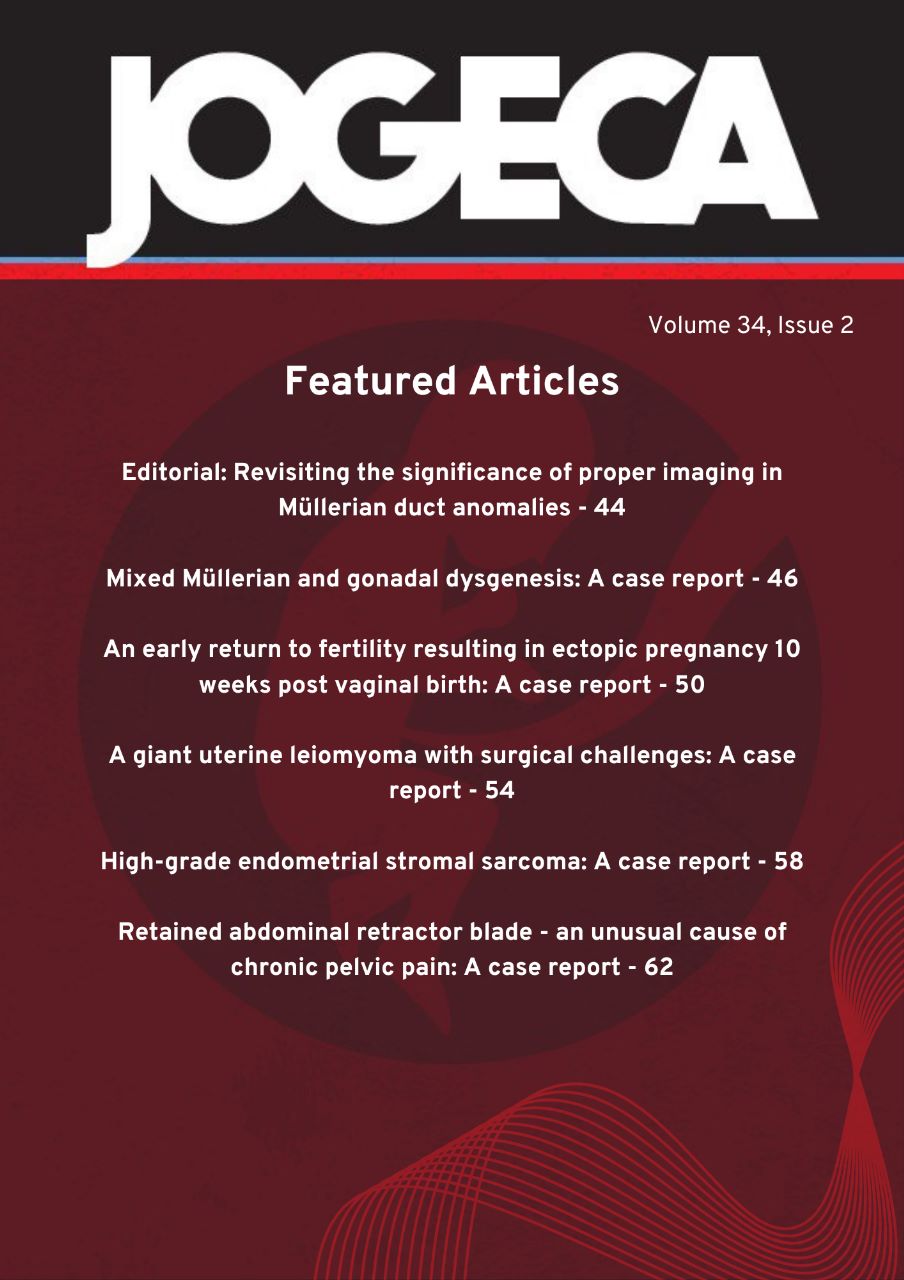Complete mole coexisting with a normal fetus in a dichorionic diamniotic pregnancy: A case report
DOI:
https://doi.org/10.59692/jogeca.v36i1.295Abstract
Background: Complete hydatidiform mole with a coexisting normal pregnancy is an exceptionally rare
occurrence with a reported incidence of 1 in 22,000-100,000 pregnancies. Management remains
controversial due to the risk of maternal and fetal complications and limited data on optimal
management.
Case presentation: A para 1 + 0 presented to the Maternal Fetal Unit at 19 weeks. Ultrasound revealed a
twin pregnancy with a single live fetus in one sac and a second sac with multiple cystic lesions and a
typical snow-storm appearance consistent with a complete molar pregnancy. The placenta of the molar
pregnancy was also low-lying, covering the internal cervical os. She had several episodes of antepartum
hemorrhage, which was managed expectantly because she was keen on conception. At 25 weeks, she
presented with copious vaginal bleeding and chills. Speculum examination revealed vesicles with
ultrasound revealing a single live fetus, but complete molar pregnancy was not observed. After
admission, the patient became febrile with tachycardia. Amniocentesis was performed to rule out
intraamniotic infection in viable pregnancy. A decision was made to undertake an emergency
hysterotomy because of deteriorating maternal status, placenta previa, and breech presentation.
Maternal blood culture was positive for group B Streptococcus, with fetal blood and amniotic fluid cultures
being sterile. Histopathology of the placenta revealed features consistent with acute chorioamnionitis and
peripheral molar pregnancy.
Conclusion: This case highlights the difficulty in the management of such cases, as illustrated by
multiple episodes of antepartum hemorrhage and subsequent maternal sepsis. Multidisciplinary care and
shared decision making remain integral to management.
Downloads
Published
How to Cite
Issue
Section
Categories
License
Copyright (c) 2024 The authors.

This work is licensed under a Creative Commons Attribution 4.0 International License.




